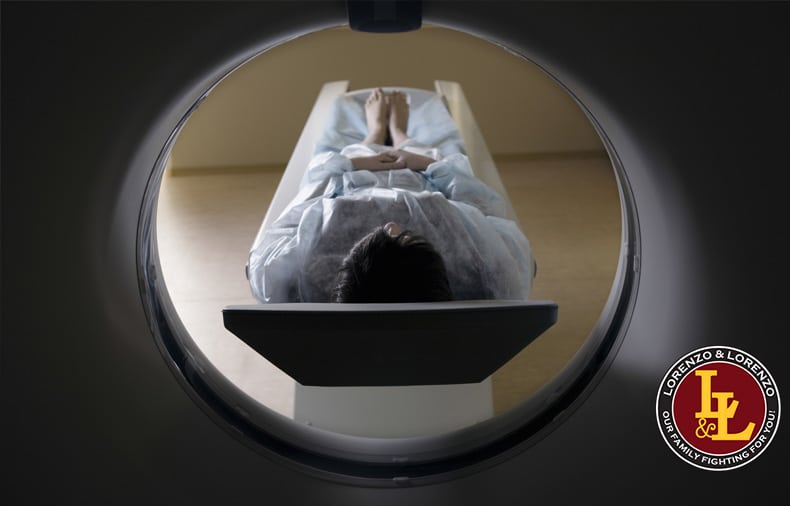
Understanding internal bleeding injuries and how to get legal help to pay for treatment
Any serious injury can result in trauma and internal bleeding. Internal bleeding often occurs after a catastrophic injury, such as a car or truck accident, slip-and-fall accident or medical malpractice.
Internal bleeding is a medical emergency. It can occur in any part of the body. If a vein or artery is injured, blood may pool in your body, and your circulatory system may be affected. Internal bleeding can be difficult to diagnose and can worsen over time.
After identifying the internal bleeding site, doctors may try to repair it. However, it’s not always easy for doctors to see internal bleeding that results from trauma. Internal bleeding may be life-threatening.
Signs and symptoms of internal bleeding
Symptoms of internal bleeding include
- Low blood pressure
- Dizziness
- Visual problems
- Weakness
- Numbness
- Nausea and vomiting
- Abdominal pain and diarrhea
- Shortness of breath
- Dark stool
Which symptoms you develop will depend on which area of the body is affected.
- Head. May cause tingling in your hands and feet, one-sided body weakness, severe headache, vision or hearing changes, problems with swallowing, difficulties in understanding others’ speech or speaking yourself, feelings of lethargy and loss of consciousness.
- Chest. May cause shortness of breath, abdominal or chest pain, dizziness, blood in the urine, dark (tarry) stool and visible blood loss from areas, including the mouth and anus.
- Muscles and joints. May cause joint pain, swelling and difficulties with moving the affected area.
Internal bleeding injuries can also cause shock. Heavy blood loss causes symptoms such as low blood pressure (orthostatic hypotension), sweaty skin, tachycardia (rapid heart rate), weakness, or sleepiness.
What causes internal bleeding?
Internal bleeding can result from trauma or force (such as a car accident or fall) and occurs when blood vessels are damaged. It’s possible to suffer from internal bleeding without the visual appearance of bruises or cuts on the skin.
Broken bones can cause internal bleeding, especially if you break a major bone such as a rib or femur.
The body typically tries to stop blood loss by making clots. Bleeding disorders interfere with this natural process, which can cause you to bleed more freely.
Taking some medications, such as blood thinners or aspirin, places an injured person at greater risk for internal bleeding. People with chronic high blood pressure, inherited bleeding disorders or other chronic conditions are also at a higher risk of internal bleeding following an injury.
After a traumatic injury, doctors may need to perform surgery. However, they must ensure that all internal bleeding is resolved. If they’re unaware of internal bleeding in the body, the bleeding can progress even after surgical intervention.
Regardless of the cause, anyone experiencing internal bleeding needs urgent medical attention. Even minor amounts of internal blood loss can become serious without identification and treatment.
What is a catastrophic injury?
Catastrophic injuries are injuries that cause significant damage and may require an extended time to heal.
Traumatic brain injury, organ damage, broken bones and internal bleeding resulting from catastrophic injuries are all too common.
A head injury may cause bleeding or bruising inside a person’s skull. This may cause problems with memory, sleep and regulating emotions. Some people may only experience short-term problems after a traumatic brain injury, while others experience permanent deficiencies.
Broken bones, such as fractured ribs or a broken femur, can occur after a car or truck collision. Broken bones limit mobility and can cause severe pain. Treatment usually includes rest, physical therapy, and medication. Surgical repair might be necessary if the fractured bones cause additional internal damage.
A punctured lung can result from a car or truck collision, blunt trauma, a slip-and-fall accident or medical malpractice. When this occurs, air leaks into the space around your lung inside your chest, causing pressure that can eventually make your lung collapse (known as a pneumothorax). Signs of a pneumothorax include fatigue, breathing difficulties, chest pain and tightness in the chest. Needle aspiration and surgery may be necessary.
Other organ damage can also occur after a traumatic event. Organ damage is a severe health issue. To resolve organ damage problems, you will likely need surgery or even an organ transplant if the damage is severe. In some cases, damage to one or more organs can result in death.
Penetrating trauma vs. blunt trauma
Urgent medical attention is needed after a blunt force or penetrating trauma. Blunt trauma results when the body and a moving object collide, such as in a car accident. If the vehicles are traveling at high speed, blunt trauma is almost a certainty. Blunt trauma is also common after a slip-and-fall accident.
Penetrating trauma happens when an external object penetrates or pierces the body. Damage to blood vessels, organs and other traumas may result in internal bleeding. Even a seemingly small injury can cause serious internal bleeding.
Internal bleeding is especially dangerous. Head trauma can cause cranial hemorrhaging, bleeding in and around the lungs or heart, large blood vessel tears, abdominal and organ injuries, lacerations and perforations.
Internal bleeding can occur slowly or quickly depending on the person’s injuries. It’s possible to show no signs of internal bleeding until hours or days after a traumatic event.
What to do after a catastrophic injury
Seek medical attention after you or someone you care about is involved in an accident. Even ground-level falls or minor incidents can cause serious injuries. Internal bleeding and other internal injuries usually don’t heal without medical intervention and will likely require surgical repair.






